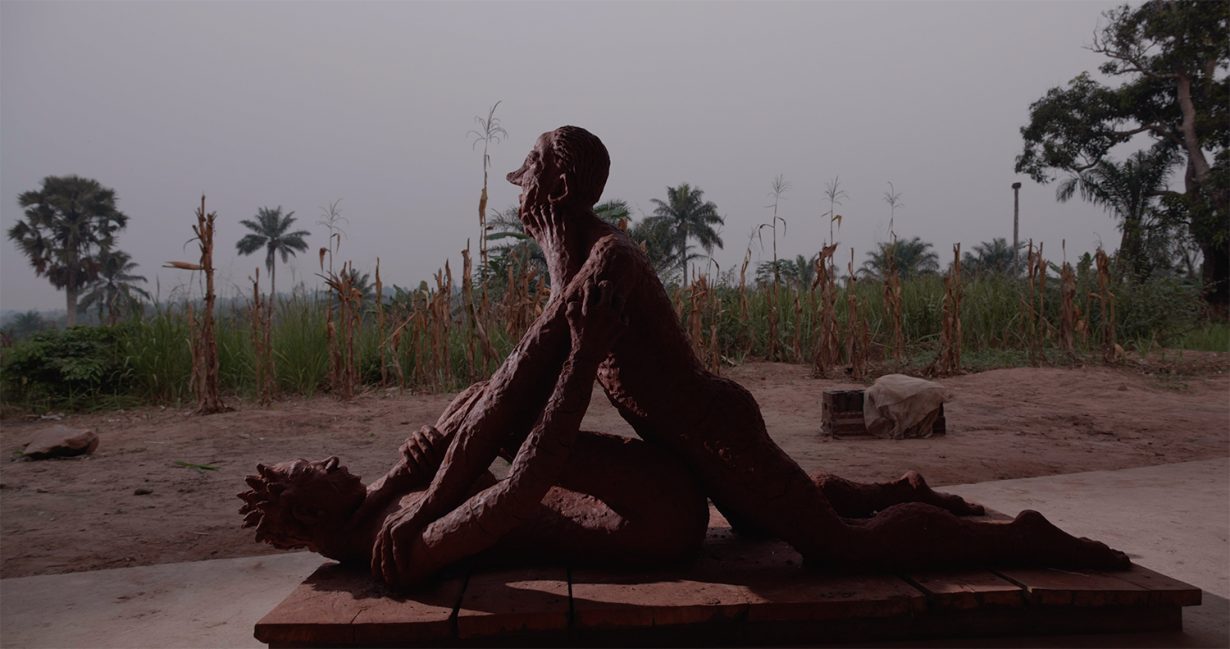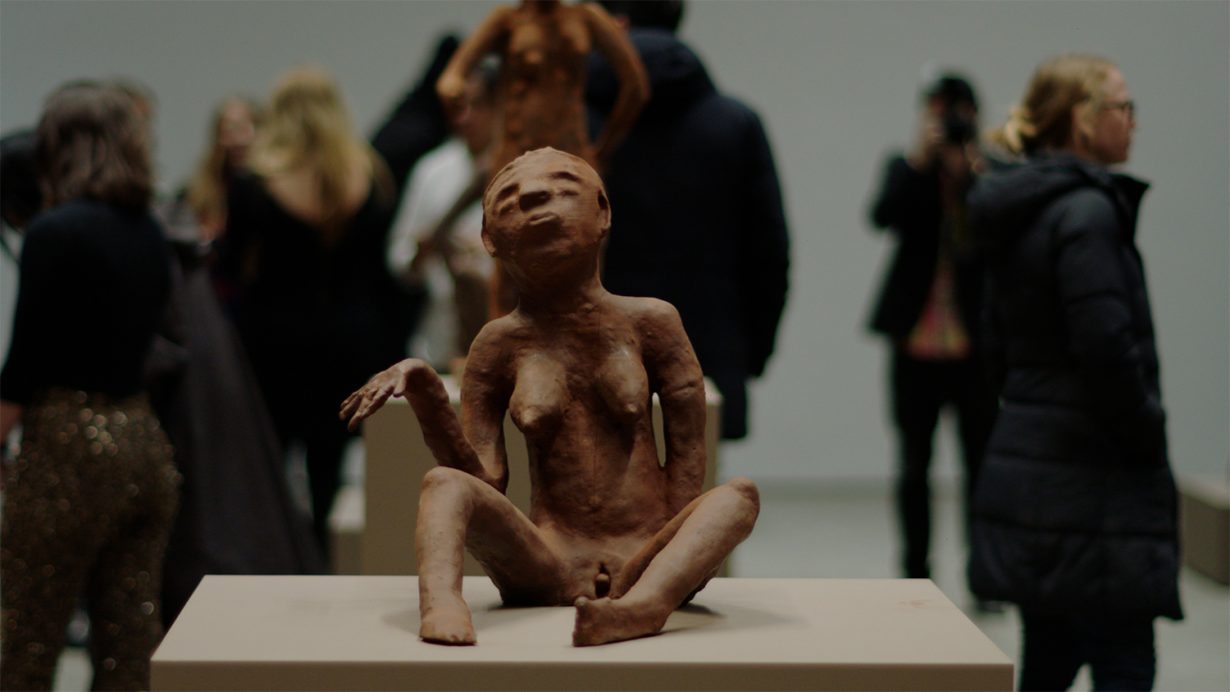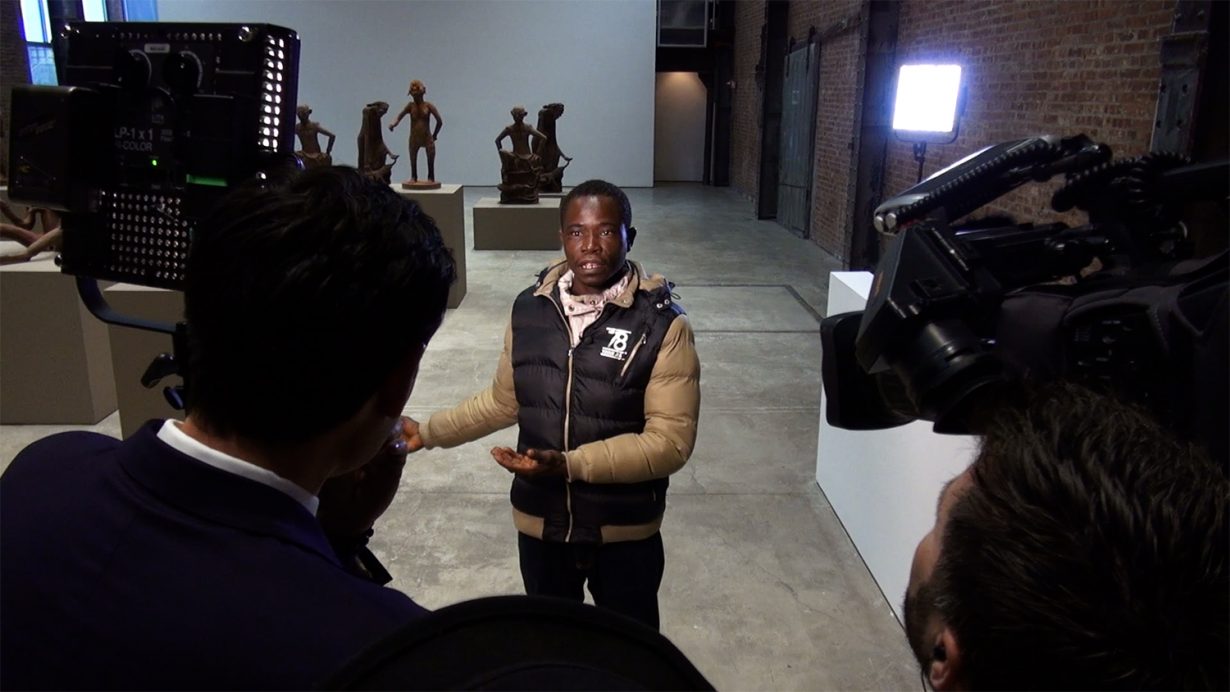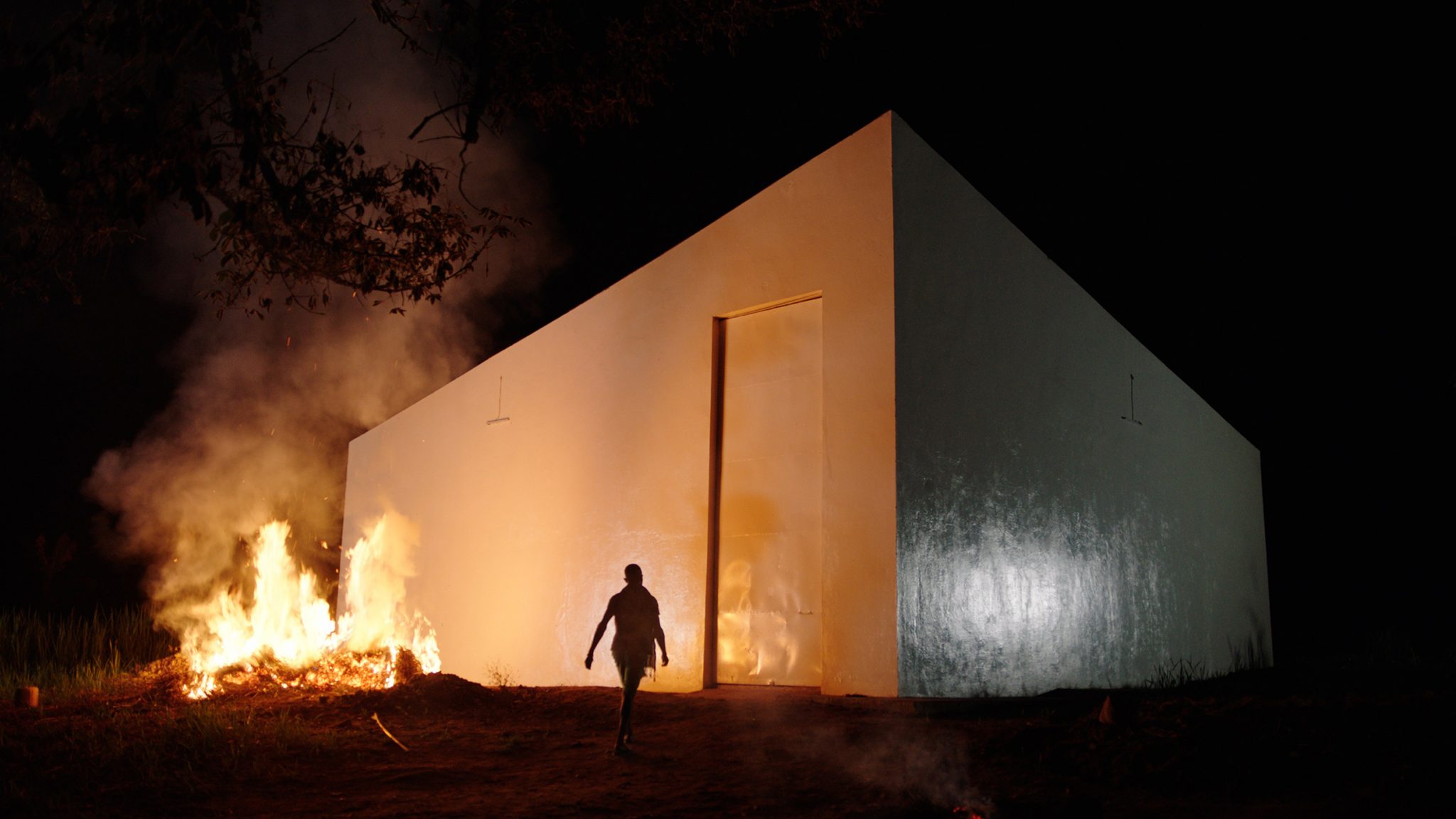The Dutch artist’s critical take on the operations of critical art, cultural capital and the wealth that funds the two
“I made a film in Congo ten years ago. And then I was invited to present it at Tate Modern in London. When I entered that museum, I saw ‘Unilever’ logos all over the white walls of the museum… Unilever, Unilever, the Unilever series… The greatest, most famous artists of the world, financed by Unilever.” This is Renzo Martens, speaking in his latest film, White Cube (2020), which tells the story of a decade of his attempts to draw the contemporary artworld into uneasy relations with palm oil workers in the Democratic Republic of Congo (DRC). Workers who labour on what were, until relatively recently, plantations owned by multinational conglomerate Unilever.
The film to which he is referring in White Cube is his notorious Episode III: Enjoy Poverty (2008), in which, travelling around the DRC, Martens attempts to engage local photographers in discussions about the nature of the international media economy and the Western market for images of suffering in other parts of the world. We find Martens telling the local people that they are wasting their time photographing parties and weddings when there is so much more money to be made cataloguing the country’s poverty and political instability. Showing what Western photojournalists get paid for photographs of corpses or of women who have been raped, he tries to plug the Congolese photographers into an economy that profits from the suffering. Soon he runs up against the hostility of photographers resistant to giving up their lucrative work and UN officialdom suspicious of this odd Dutch meddler, roaming around Congo trying to get people to redirect their poverty-line work towards exploiting a cultural economy that is fuelled by representations of their own precarity.

Episode III: Enjoy Poverty has provoked much confusion and controversy in the years since, partly as a consequence of its apparently neutral or ambiguous take on the exploitation of suffering, partly for the way in which it plays on the raw nerves of liberal sentiment regarding historical Western colonialism and the racist trope of the ‘white missionary’ figure going among Black Africans to ‘help’ them: a persona that Martens – a tall, gaunt presence, sporting white shirts, straw hats and zealous enthusiasm to explain the workings of inequality – inhabits with a mixture of apparent indifference and naivety.

But perhaps the reason Episode III raised hackles is because many viewers tend to ignore that the film’s underlying question – that there is an extractive relationship between Western media systems and their subjects that parallels the extractive relations that already exist between rich and poor countries – is offered to indict critical artistic practice as well. Martens, after all, has profited from his film, as do many artists whose work critiques global power relations and political injustices. The ethics of the film, beneath its documentary veneer, are about the politics of standpoint in supposedly critical artistic practice – that the artworld should be a space of political autonomy, allowing for work that might address the iniquities of global society for as long as the conditions of its own site of production and reception remain outside the frame, and for as long as it remains within the institutional confines of the artworld.
The site of Episode III’s reception – the artworld – didn’t quite align with its subject. Which brings us to White Cube. Divided into two parts, it summarises the main projects Martens has pursued over the last ten years, in his attempt to force the contemporary artworld, site of high-end cultural consumption, into direct relationship with a part of the world economy from which it is normally completely estranged, a site of primary agricultural commodity production, at the other extreme of the ‘value chain’ of economic life: the palm oil plantation. Martens’s first experiment, in 2012, was to establish a conference and workshop site in a corner of a palm oil plantation at Boteka, which had bought the plantation from Unilever in 1995. Unilever had owned and exploited this and other huge plantations that had been established by the British industrialist William Lever, who was granted the concession in 1911, when what is now the DRC was under Belgian colonial rule. In Boteka plantation workers are employed for less than a dollar a day, living in the dilapidated remains of the workers’ village first seen, newly built, in clips from a film shot for Pathé News in 1950.

Here, Martens set up talks and workshops on the question of gentrification. We see a conference event at which the economist Richard Florida – one of the key theorists of gentrification and author of the 2002 bestseller The Rise of the Creative Class – calls in by video to explain how the establishment of cultural infrastructure attracts urban economic development. The film’s somewhat quixotic suggestion seems to be that such ‘gentrification’ might be achieved in rural DRC. Art workshops are organised, but these eventually run into problems. A woman asks Martens what use these creative products have when it comes to feeding her family. Then the plantation bosses, directed from London, decide that Martens and his team are no longer welcome, and the police turn up to force them out.

White Cube’s second part charts Martens’s subsequent and most recent collaboration with Congolese plantation workers, in Lusanga (once known as Leverville, the colonial-era headquarters of the Lever plantation operations). Martens tries out another approach: with a group of local plantation workers he sets up a sculpture workshop, and the group soon establishes itself as the Cercle d’Art des Travailleurs de Plantation Congolaise (Art circle of Congolese plantation workers, CATPC). Martens digitally scans the works they produce, reproducing them in Europe cast in chocolate and palm oil. In 2017 the sculptures are presented in a number of ‘white cube’ institutions, among them Cardiff’s National Museum and New York’s SculptureCenter. The film follows CATPC member Matthieu Kasiama from the SculptureCenter to the African collections of the Metropolitan Museum of Art, where he is shown sculptures purchased by Nelson Rockefeller from dealers in artworks from the Belgian Congo, and where he unnerves rubber-gloved conservators by touching a ritual artefact they are showing him.
The year 2017 is also when Martens and his collaborators built the OMA-designed ‘White Cube’ itself – a simple, pristine, white-walled exhibition space in the middle of land acquired by the CATPC, which had been using proceeds from sales of the sculptures to develop a sustainable agriculture in Lusanga. “Between art and land, I would choose both,” says Kasiama in the film, “but if I’m told to take only one, I would take the land.” Dispossessed for a hundred years by the colonial appropriation of land, and postcolonial ownership that has perpetuated this dispossession, people in Congo know that land ownership is power.

White Cube is loaded with an ironic sense of absurd improbability at what Martens and his collaborators have achieved. Having made an artistic ‘product’ in rural Congo, it is transmitted and transposed directly into the creative economies of the rich West. In recapping a decade of Martens’s work, White Cube alerts us to how critiques of racial capitalism and the history of the plantation as driver of the capitalist world economy have come to the fore more recently in artistic debates. But that collapsing of the distance between Lusanga and New York highlights what Martens has always set out to do – to loop the privileged standpoint of art’s critical rhetoric back on itself. After all, to criticise racial capitalism from the site of Western contemporary art is one thing, but to short-circuit the division between commodity production and cultural consumption – to turn dollar-a-day agricultural workers into landowners and cultural workers – highlights the cultural sector’s complicated and often contradictory mediations between critical art, cultural capital and the sources of the wealth that underpin them. And in that, White Cube offers more open-ended provocations. After all, while Western institutions wring their hands over diversity and decolonisation, they remain beneficiaries of global capital, of the supply chains and value chains that lead back to the agricultural and mineral commodity producers of the Global South. (More than agriculture, Congo’s economy is dominated by mining – of cobalt and coltan, and huge, unexploited reserves of lithium.)
Meanwhile, as restitution debates rage in the West’s museums, and activists demand repatriation of African collections, the question of where these collections should end up – in countries with extreme divisions of wealth and poverty, where the conglomerates of the north continue to own and run the extractive operations and where civil institutions are already frail or nonexistent – is always left unanswered. Substantial economic development, of the kind that might make Africans part of the global middle classes of the future, is what’s necessary to raise museums, train curators and create audiences with the time and leisure to enjoy their own cultural heritage. At the end of White Cube we see the white building from above, in the verdant plantation CATPC has made for itself. That it seems so anomalous, so foreign and utterly out-of-place, perhaps says something about our standpoint – that it’s impossible to imagine Congo, or Africa as a whole, as anything other than poor and underdeveloped; the site of extraction of value, never the place of its consumption.
All images: stills from Renzo Martens, White Cube, 2020, feature-length documentary. © Human Activities
From the November 2021 issue of ArtReview
